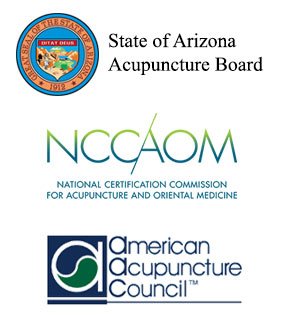Japanese Acupuncture, Phoenix, AZ
Hysterectomy Equals Mastectomy And The Notion of Oketsu (Stagnation Blood)
Ask anyone who had a mastectomy, if she had a hysterectomy years before the malignancy, and you will find that almost everyone would say yes. Today, hysterectomy is a money-making procedure for surgeons and many young and middle-aged women would yield to it without receiving enough explanation of the consequence. Something a surgeon or a doctor does not know and perhaps cares to know about is what would happen to your body after five, ten, or fifteen years from the surgery.
Co-relationship of hysterectomy and mastectomy is very high enough and we might safely say that hysterectomy is equal to mastectomy. Why the co-relation? From Oriental Medicine point of view this is due to Oketsu. This is a Japanese word for stagnation of blood and energy. “O” means stagnation, congealed, or dirty. “Ketsu” means Blood. It is a physical symptom as well as energetic manifestation.
Oketsu usually starts from the lower left quadrant of the lower abdomen, about two inches lateral to the naval, one and half inches inferior. As the stagnation progresses, it moves to the right lower quadrant. Upon palpation and pressure, a patient feels pain or discomfort. A practitioner feels a physical lumpiness or tightness. Western medical diagnosis of Oketsu would be phantom or pseudo pain, psychological, a problem with the ovary such as cyst, or an enteric disorder. Since it is an internal energetic manifestation, massage, surgery, or drugs cannot take the pain away. Western medicine has no means to treat the symptoms. Only by the manipulation of acupuncture points, the pain dissipates and goes away. In Oriental Medicine, treating Oketsu is the primary protocol. This energetic blockage must be cleared before treating any symptom.
Here are some of the factors which create Oketsu:
Asthma, birth control pills (especially the early pills), cancer patient with radiation therapy, chemical and environmental factors, chronic pain, drugs (e.g., Prozac), easy to bruise person, gastroenteric problems such as colitis, GYN issues, hemorrhoid, high blood pressure, high cholesterol, infection (any type), liver problems such as hepatitis or cirrhosis,
lungs and heart problems, open-heart surgery, PMS, post natal depression and fatigue, stroke, sudden deaf, surgery (any, especially the abdominal, also including cosmetic), etc.
The Oketsu energetic moves from the lower quadrant to the right lower quadrant, then moves up to the right breast tissue, then to the left breast tissues, and comes down to the starting point. You can imagine a Ferris Wheel on the abdomen and the navel as its center. Its energy moves clockwise if you are looking at the patient’s abdomen.
For acupuncturists, good news about the energetic is that we can treat, say, the upper right quadrant area (the liver area) by treating the lower left quadrant, because the lower is the starting point of the disease*.
For patients, knowing how to cut the circulation of Oketsu is to be proactive. After any trauma, surgery, infection, etc, the first line of defense and detoxification is to drink lots of water: get rid of toxins by urination. If diarrhea and constipation are frequent, we must smooth out the digestive system and increase the nutrient absorption rate. This will boost our immune system and increase our capability to detoxify. Eat clean and organic food. Changing of diet is perhaps the single most effective weapon we have for any disease. Consult with a nutritionist, eat healthy and do not overeat. Do some liver and colon cleansing. Strengthen the liver by eating right foods and taking vitamin supplements. Receive physical check up, do blood test, and other diagnostic methods regularly.
Acupuncture is the best to treat Oketsu and to cut the bad energetic circulation. Qi and Blood must move throughout the body. Oketsu is treatable. It should be treated as soon as possible to avoid the future symptoms. I recommend everyone to receive acupuncture treatments at least twice a year as a check up.
Copyright: Japanese Acupuncture 2016


